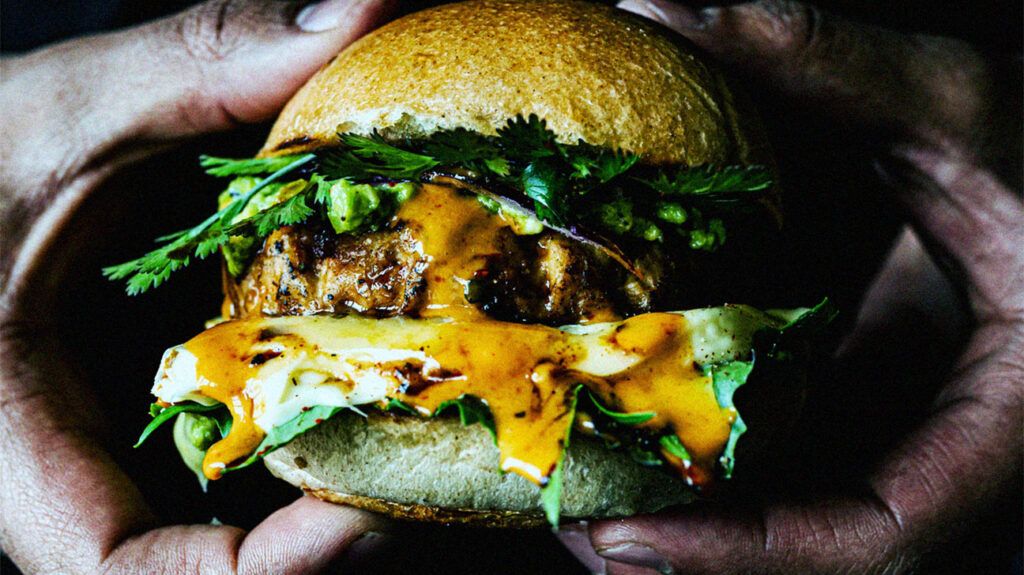
- Protein is a critical diet component, but the source — animal or plant-based — does make a difference.
- Mycoprotein is derived from a fungus and used in some meat substitute products.
- Research on its benefits is ongoing.
- A recent study found that swapping meat and fish for mycoprotein may help significantly lower cholesterol levels.
Diet plays a crucial role in all the body’s systems. Protein is often part of a well-balanced diet and can come from various sources. Researchers are interested in non-animal protein sources and their benefits for consumers, including how they influence components like cholesterol and blood glucose levels.
A study published in Clinical Nutrition compared eating mycoprotein or fungal protein products with eating fish and meat over four weeks.
The results of the study indicated that the group that ate mycoprotein experienced up to a 10% drop in certain cholesterol levels.
Should future research confirm these findings, consuming mycoprotein might become another tool to help people keep their cholesterol levels in a healthy range.
What is mycoprotein?
Mycoprotein comes from a fungus and is high in protein. Products with mycoprotein could be a substitute for animal sources of protein like meat or fish. Mycoprotein also contains high amounts of fiber.
Researchers of the current study wanted to see how eating mycoprotein instead of meat and fish influenced cholesterol levels, specifically in people who were overweight and had elevated cholesterol levels. Researchers noted that these individuals were more at risk for cardiovascular disease.
People can influence their cholesterol levelsTrusted Source through lifestyle interventions, including diet changes. Beata Rydyger, a registered nutritionist based in Los Angeles, CA, and nutritional contributor to HPVHUB, who was not involved in the study, explained to Medical News Today the importance of controlling cholesterol:
“Controlling cholesterol is crucial because it impacts heart health and the risk of cardiovascular diseases (CVD), while also being a vital substance the body produces for key functions like forming cell membranes, hormone production, and vitamin D synthesis. The body requires cholesterol, but excess, especially of LDL or ‘bad’ cholesterol, can cause plaque buildup in arteries, leading to atherosclerosis. This increases the risk of blood clots, reduced blood flow, and serious health issues like heart attacks and strokes.”
“Therefore, managing cholesterol through a balanced diet (reducing saturated and trans fats, increasing fiber and healthy fats), lifestyle adjustments (regular exercise, no smoking, limited alcohol), and medication when needed is essential for cardiovascular health and keeping cholesterol at a healthy level,” she added.
Improvements in cholesterol, blood sugar with mycoprotein
The study was a randomized controlled trial. Participants were adults between the ages of 18 and 70. All participants had a body mass indexTrusted Source of 27.5 or higher, which indicates being overweight. The researchers assumed that this criteria would also ensure participants had elevated cholesterol. Participants were excluded if they had an allergy to penicillin or mycoprotein or were already using cholesterol-lowering medication.
Researchers randomly divided 72 participants into two groups. One group received meat and fish products, and the other received mycoprotein products. Researchers sent a particular amount based on participants’ weight. Each week, researchers conducted 24-hour dietary recalls with all participants. Participants then sent in blood samples before and after the intervention for analysis.
Overall, researchers found more improvements in cholesterol levels among the mycoprotein group.
For participants in the mycoprotein group, serum total cholesterol decreased by about 5%. Similarly, serum low-density lipoprotein cholesterol and non-high-density lipoprotein cholesterol levels decreased by about 10% and 6%, respectively, in the mycoprotein group.
Participants in the mycoprotein group also had lower average blood sugar readings and c-peptide concentrations than the control group.
Study author George Pavis, Ph.D., noted the following to Medical News Today:
“We have known for a while that eating mycoprotein, the main ingredient in Quorn products, has the potential to lower cholesterol. Up until now, this has relied on studies conducted under strict laboratory conditions, so we didn’t know if this would work in ‘real life’ settings. In our new work, we have ventured away from the laboratory and into the community.”
“We show that when participants are provided with Quorn products to eat at home for 4 weeks, their levels of ‘total’ and ‘bad’ cholesterol drop by 5-10%. This is a really promising decline over such a short amount of time. We now need to look at what happens if we extend this time, perhaps to 3 or 6 months.”
— Dr. George Pavis, study author
The study adds to growing evidence of mycoprotein’s health benefits, including its potential to decrease the risk of cardiovascular disease.
More research needed on mycoprotein and cholesterol
This research does have certain limitations. First, it only lasted a short time and included only a few participants. It also doesn’t establish a causal relationship between any of the factors.
Some data collection relied on participant self-reporting, which is not always correct. Measurement of blood sugar did not include an A1C testTrusted Source, so more research is needed to see the true effects of mycoprotein on blood sugar levels.
The reduction in cholesterol also did not change specific cholesterol ratios, warranting further research into mycoprotein’s impact on cholesterol.
Researchers acknowledge that the way they collected blood samples may have influenced the results. The study also occurred during the COVID-19 pandemic, which could have affected metabolic health. The group Marlow Foods Ltd also helped sponsor the study.
More research is needed to understand why mycoprotein may affect cholesterol and the underlying mechanisms involved.
“Exactly how this change in cholesterol occurs isn’t clear. We think this is caused by the type and amount of fiber found in Quorn food, in particular in mycoprotein, but more work is needed!,” Dr. Pavis further noted.
Is mycoprotein a good source of protein?
Future researchTrusted Source may need to focus more on the long-term health benefits of mycoprotein and any adverse long-term consequences. People who want to switch to eating less meat and more mycoprotein can consult professionals like doctors or nutritionists for guidance.
Chelsea Johnson, registered dietitian with Memorial Hermann in Houston, who was not involved in the study, noted the following:
“Plant-based proteins are always encouraged for heart health so mycoprotein would be another type of plant protein that can be introduced in adults’ diets.”
“Some people may have adverse and severe GI or allergic reactions to mycoprotein, so it’s important to monitor your individual reaction the first time consuming it. Sometimes processed mycoprotein can be high in sodium or fat, so checking the ingredient label is vital. When prepared in a healthy way, mycoprotein is a great protein and fiber source that can be incorporated into any diet.”
— Chelsea Johnson, registered dietitian







